Image: Audience
People watching cham dances at Korzok Village near Tso Moriri Lake
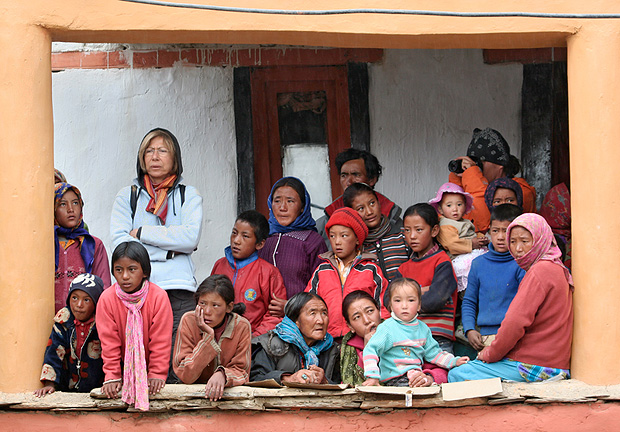
People watching cham dances at Korzok Village near Tso Moriri Lake

This article appeared in September issue of Terrascape, a travel magazine for which I am an editorial consultant and also write a column on photography. Read all the earlier earlier travel photography articles on India Travel Blog.
Across the length of the country, we see so many cultures that have their own distinct identities. The way of life, festivals, celebrations and art forms vary from state to state, and many times from one corner of a state to other. This month’s photo tips tells you how to capture such performances and stage shows.
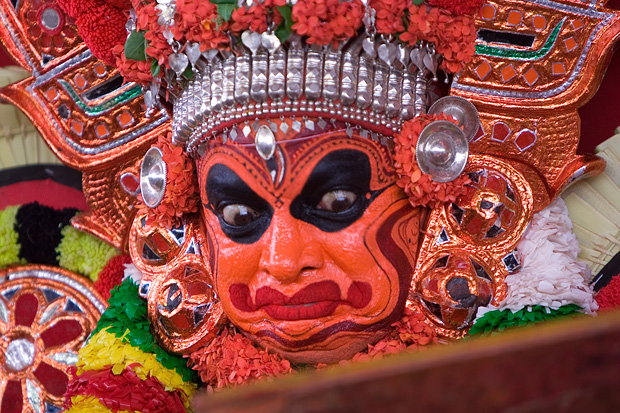
Capturing performances can pose several challenges to the photographer. Low light can be a major problem in stage shows if they are held in the night. Distance to the stage may not enable the photographer to get up close with the artists. When the performance happens in an open arena, finding a convenient place to shoot and make space among the crowds is a difficult proposition. The swift movement of the artists can add to the challenge in all occasions.
Stay alert. Alertness of the photographer is important in capturing the right moment. Often, there is little time to get your camera in position, compose and then shoot. It can so happen that by the time you aim and focus, the artist would have moved on to the next step, leaving you without a shot of that special moment. The way out is to stay ready all the time, with the viewfinder cupped to the eye. In many occasions when the steps are repetitive, use predictability of the artist’s movement to your advantage. Using a tripod can help in keeping the camera always aimed. However, also remember that you loose the flexibility to quickly change the framing when using a tripod.
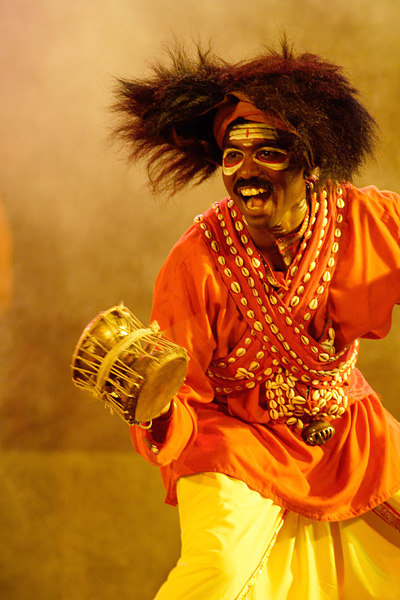
Get different perspectives. It is important to capture all possible perspectives of the show. A wide angle shot showing many artists and musicians spread across the stage gives the viewer an idea of what is happening. A close-up shot showing the elaborate make-up and facial expressions brings the subject alive and conveys the emotions involved to the viewer. Getting up close and focusing on the faces often helps make interesting images that showcases emotions like smile, laughter or even a crying performer.
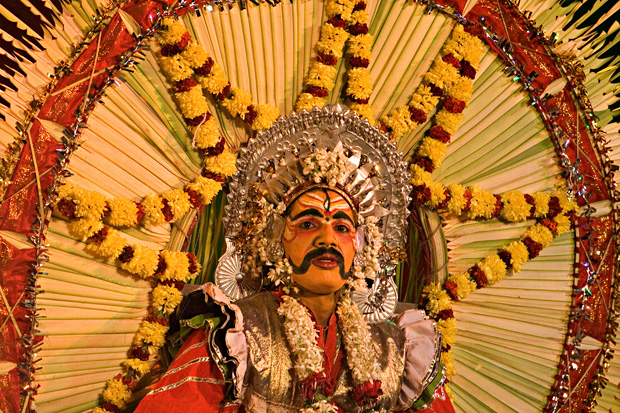
Go backstage. Action behind the scene can be as exciting as the performance itself. If you are permitted to do so, go and watch the artists getting ready, applying makeup and wearing the costumes. You are guaranteed to see a lot of activity that can interest the photographer. Ask permission before you enter, as not everyone would be comfortable getting photographed behind the stage.
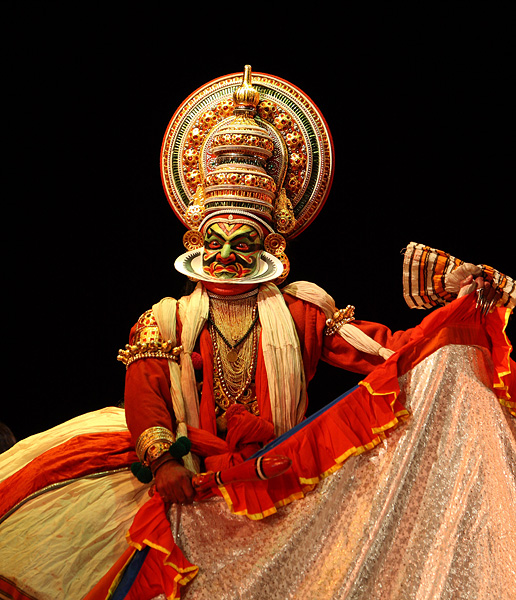
Using the right equipment. Unfortunately, some of these challenges in shooting stage shows can be overcome only with expensive equipment. Lenses with long focal length let’s you get close-ups even if you are not close to the stage. Professional photographers also use expensive lenses that can help make good images even in low light. Your camera’s capability to shoot in low light also plays an important role. Stage shows held in the night with limited amount of light can be shot well only if you have equipment that compensate for your hand’s vibration and have some inherent capability to record images in low light. If you can get them, use image stabilized fast telephoto lenses mounted on cameras that can deliver good quality at higher ISO.
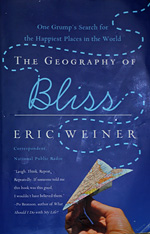
Title: The Geography of Bliss
Author: Eric Weiner
Publishers: Twelve Books
Pages: 325
Eric Weiner sets out on a world tour on a quest to find out what makes people happy. He journeys to countries where people are peaceful, happy, rich, poor and even unhappy, to find reasons for their happiness or the lack of it.
In the first chapter or two, ‘Geography of Bliss’ appears set to be a landmark book in travel writing that stands along with Theroux’s Great Railway Bazaar or John Krakauer’s ‘Into thin Air.’ It comes across as a completely new approach to travel writing. Weiner seems to be after something really important and out to reveal a truth that can keep humans happy forever in future. But he looses track quickly as he tries to mix a journalistic research and scientific discoveries with personal experiences, and doesn’t steer the book in any particular direction. It has elements of Theraux’s mindless interactions with people encountered on the way; it has a typical journalist’s way of working using interviews supported with some data to come to some conclusion. None of these finally strike a chord with the reader, but the flow of the book and Weiner’s engaging humour takes you till the last page without much effort.
Weiner begins his journey with some scientific data. At a happiness research center in Netherlands, he goes through tonnes of data that gives an idea of most and least happy countries. He goes through some insights that reveal some obvious truths (winning a lotter makes a person happy) and some not so obvious (but the lottery winners quickly return to their earlier state of mind). The research center also helps him choose the countries to visit – Switzerland and Iceland – the countries that consistently stayed on the top of happiness charts and Moldova – the least happy country – a former Soviet territory sandwiched between Romania and Ukraine.
He spends time in these countries speaking to expats, talking to a few locals and searching for a national attitude (or conditions) to find reasons for people’s happiness levels. The book comes dangerously close to being a dry reportage of a journalist, but is saved by Weiner’s continuous infusion of humour in nearly every incident, conversation and observation. It also comes close to Theroux’s style of writing in Railway Bazaar where people and interactions take center stage and leaves everything else behind, including Weiner’s search. But his humour too becomes overdone and appears deliberately forced at occasions.
Weiner’s interactions with people and his humour helps the reader stay with the book and go along with him in the journey, though it becomes quickly obvious that he is not about to unveil any secrets to happiness. But at the end of the journey he reaffirms time-tested wisdom that your social interactions, quality of living, faith, trust, all have their contribution to happiness. He discovers that money is essential but is not the biggest contributor to happiness. But his discoveries and the strength of the topic aside, the book scores in the narration that finally keeps you turning pages.
Powered by sciolism 2019 and WordPress.